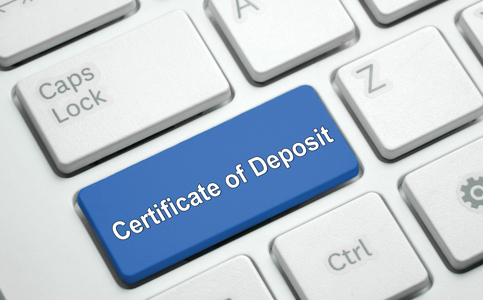
Certificates of deposit and money market fund options are becoming front and center to banks’ marketing strategies, as they start to raise their accelerating interest rate to attract depositors.
Net withdrawals have reached $278 billion nationally, according to the Federal Deposit Insurance Corporation, and to curb the outflow, banks are lifting their own rates they pay from historic low levels to more than 5% in some cases for certificate of deposits, Bloomberg reported.
“With the stimulus that we saw in the last few years, there was a lot of liquidity that was flooding the banking system,” said J.C. de Ona, Southeast Florida division president for Centennial Bank, “and with what we’re seeing today in the economy with inflation, we’re starting to see that banks that were once flush with deposits drying up a bit today.”
The focus on deposits is gaining traction once again, he said. “You’re going to see banks concentrating on marketing for deposits, bank relationships and treasury services.”
Capital One and Forbright are offering a yield of 5% in certificates of deposit; Marcus by Goldman Sachs’s one-year certificate of deposits has an annual percentage yield of 4.5%; US Bank’s seven-month deposit is yielding 4.4%, and its 19-month deposit reaches 4.7%; American Express National Bank’s certificate of deposit’s annual percentage yield is at 4.5%; and Wells Fargo & Co.’s 11-month certificate of deposit is yielding 4%.
In addition, Marcus by Goldman Sach’s savings account APY’s is at 3.75%; Synchrony Bank’s savings account is at 4%; Betterment also has a 4% APY; Western Alliance Bank’s savings account has a 4.5% APY.
“Money markets have become much more of a tool than what we used to see as traditional savings accounts, just because the return is typically larger than what is happening in savings,” said Mr. de Ona.
Openings of savings accounts have declined tremendously, he said. “Most of the accounts we open today are money market accounts.”
The average rate before the Federal Reserve raised rates last year was 1.25%. The current average rate sits at about 1.5%, still well below inflation. Nonetheless, this rise in rates – the highest since November 2007 – is slowing growth in banks’ net interest income by 11% compared to last year, Bloomberg reported.
This growth in deposits, however, added $1.7 trillion in the US banking industry during last year’s fourth quarter, according to S&P Global, and about $632.9 billion to the year’s overall banking system net interest income, as reported by the Federal Deposit Insurance Corp.
According to Arnold Kakuda, a bank credit strategist at Bloomberg Intelligence, community and smaller regional banks will be the hardest hit by the rising funding costs if they raise their interest rates to match bigger banks.
“There is much more competition in the market today on deposits,” said Mr. de Ona. “That will continue, and it’s going to be in the forefront now for banks, for customers; for banks to continue to keep and attract new customers.”
https://www.miamitodaynews.com/2023/03/14/bank-marketing-strategies-shift-to-cds-money-market-funds/


